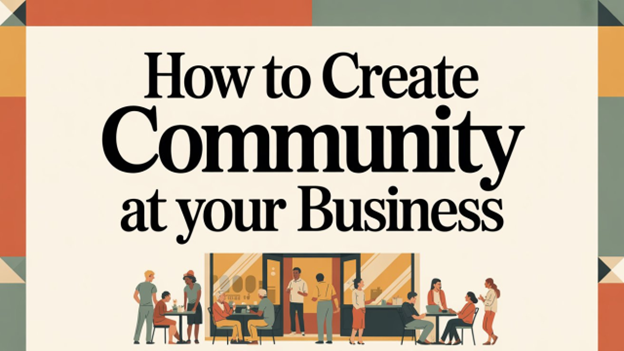Tips for Reaching Holiday Shoppers This Small Business Season
It feels like articles about holiday spending in recent years have all started with the same intro—costs are up, consumers are looking for value. While this year is no different, there are a few parts of the consumer landscape that present a unique set of challenges for small businesses.
According to the latest BizInsure holiday spending survey, there are a couple of things you should be doing to adapt and thrive this Small Business Season.
The 2024 Holiday Shopper: Budget-Conscious and Practical
Forget extravagant gifts and lavish travel plans. This year, it's all about essentials and value. Consumers are feeling the pinch of inflation (again or still, depending on how you look at it) so it’s no surprise they are prioritizing practical purchases.
Here's how your small business can cater to this mindset:
- Position Your Products as "Must-Haves." Communicate the value and practicality of your offerings. Highlight durability, functionality, and how your products solve everyday problems. Don’t assume it’s obvious and they’ll know. Spell it out for them.
- Embrace the Power of Bundling: Create attractive gift bundles at various price points, combining essential items that offer value and convenience for the shopper.
- Promote Gift Cards with a Personal Touch: Gift cards remain a holiday favorite. Offer beautifully designed cards (or gift boxes), perhaps with personalized messages or small add-ons to make them extra special.
Winning Over the Younger Generation
While overall trends point toward practicality, Gen Z shows a stronger inclination toward experiences and supporting small businesses.
Capitalize on this by:
- Creating Memorable In-Store Experiences: Transform your shop into a festive destination with interactive workshops, personalized consultations, or holiday-themed events that resonate with younger shoppers. Make it Insta worthy.
- Collaborating with Gen Z Influencers: Leverage the power of social media by partnering with relevant influencers who can authentically showcase your products and brand to their audience. Don’t know an influencer? How about a loyal Gen Z customer? Give them a reason to talk about you and share their experience.
- Thinking Outside the "Experience" Box: Even if your business doesn't sell experiences directly, find creative ways to incorporate them. A bookstore could host author readings, or a home goods store could offer decorating workshops.
Leveling the Playing Field with Retail Giants
Large retailers are often thought of as more convenient and less expensive. That’s why you have to change the conversation from dollars to value. When it comes to gifts do shoppers really want to give the cheapest gift or do they want to get the most value for their money? If it’s the latter (after all, who wants to be the cheapo) then you want patrons to know how shopping with you is more valuable. Ideas include:
- Offering Unmatched Customer Service. No large box store offers personalized attention, expert advice and product knowledge, gift wrapping, and a genuinely warm and welcoming atmosphere like a local business. Big-box stores simply can't replicate that.
- Boosting Your Online Presence. Ensure your website and social media channels are top-notch. Use compelling images and descriptions. Ensure you have a seamless online ordering process.
- Providing Competitive Shipping and Delivery: While you may not have Amazon's logistics network, offer reliable and affordable shipping options, including in-store pickup or local delivery services. You don’t want inconvenience to be a justification for not shopping with you.
Harnessing the Strength of Community
This holiday season, community matters more than ever. Don’t discount its power. People are enjoying and feeling good about supporting local. Here’s how you can be an even bigger part of the community:
- Join Forces with Fellow Small Businesses: Collaborate on joint promotions, cross-promote each other's products, or participate in local holiday markets to expand your reach and create a sense of community spirit.
- Give Back Through Charitable Partnerships: Partner with a local charity to donate a portion of your holiday sales. This not only benefits a worthy cause but also enhances your brand image and resonates with socially conscious consumers. If you sell something that I child would be interested in, give a discount to those who are purchasing for an Angel Tree or a toy collection program. Let the nonprofit community know you’re doing that, and they may give you a shout out and direct some people your way.
- Nurture Customer Relationships: Actively engage with your customers through social media, email newsletters, and personalized in-store interactions to build lasting relationships and foster loyalty. Listen on social media and in online communities for people asking for gift ideas.
Don't Overlook the Holiday Essentials
Finally, remember the tried-and-true tactics that always contribute to a successful holiday season:
- Running Festive Promotions and Discounts. We could all use those right now.
- Extending Shopping Hours. Cater to busy shoppers by offering extended hours or special shopping events during evenings and weekends, making it more convenient for them to visit your store.
- Creating a Welcoming In-Store Environment: Ensure your store is well-stocked, neatly organized, and festively decorated to create a positive and enjoyable shopping experience.
You don’t have to convince people you are the cheapest store on the block. You just have to give them a reason to want to buy from you and that comes out of festive experiences and good value.




